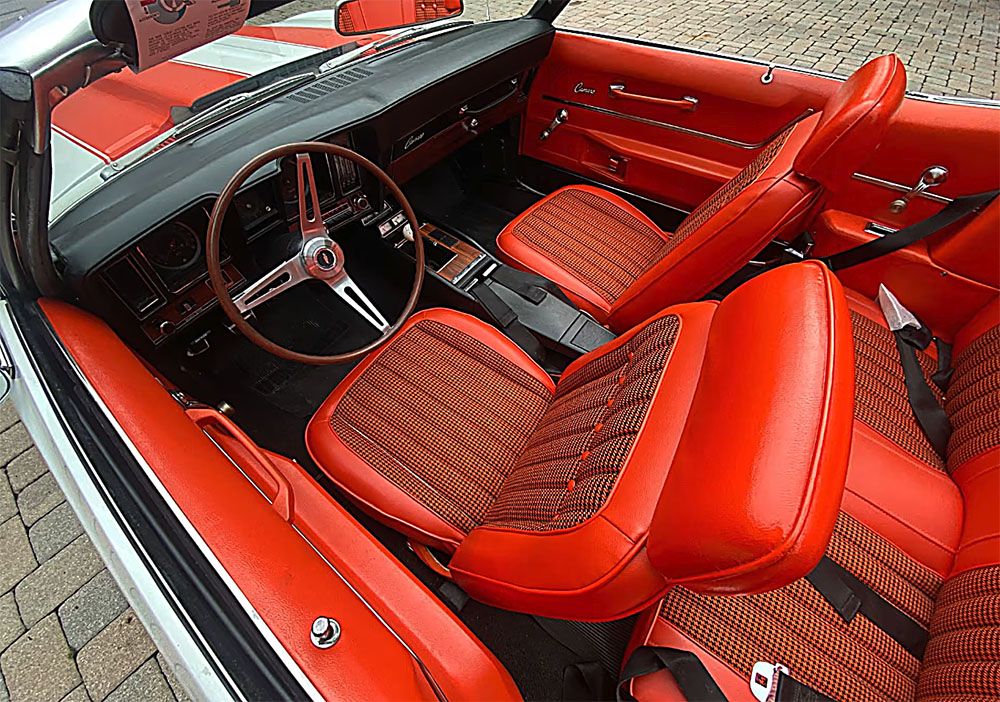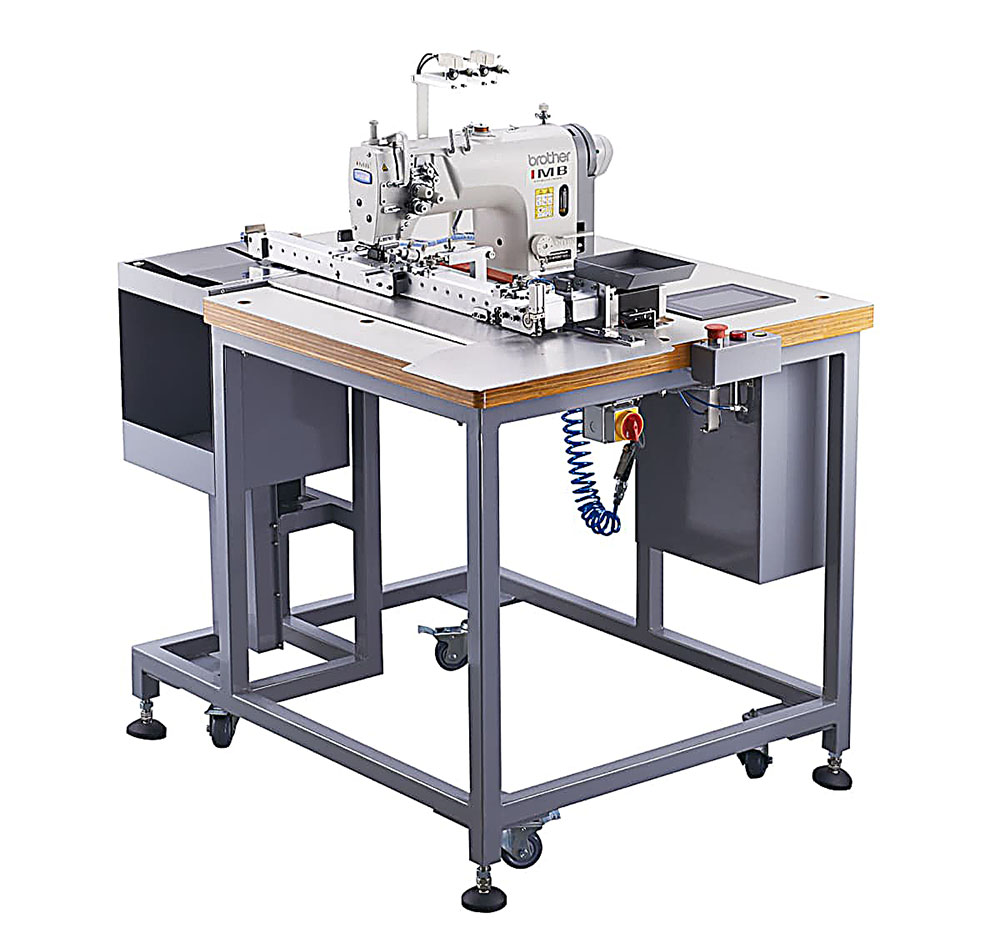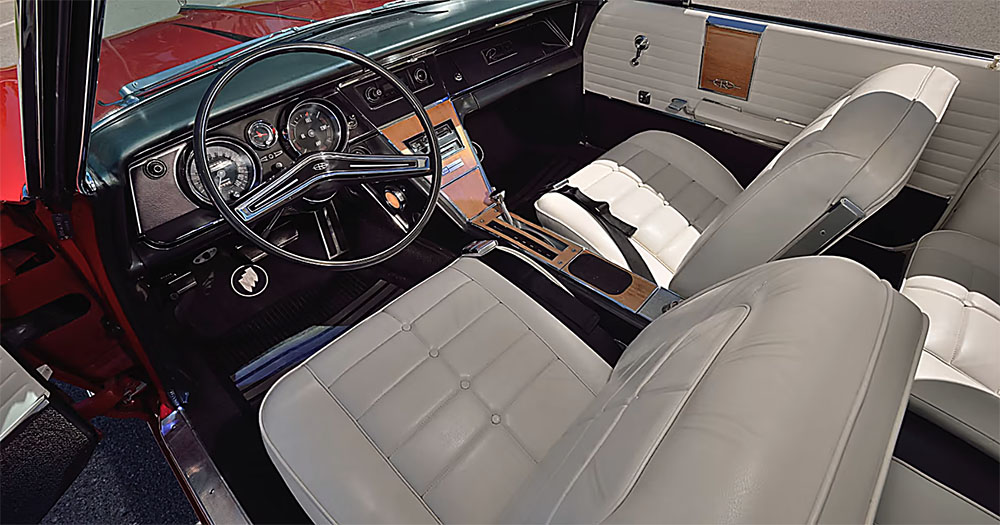Video & Article: Auto Upholstery & the Invention of the Sewing Machine
Posted by D. Brian Smith on Jul 3rd 2024

During the Industrial Revolution, a monumental shift occurred in manufacturing processes across Europe and the US, spanning from approximately 1760 to the mid-19th century. This era marked a pivotal transition from manual labor to the utilization of machinery, advancements in chemical manufacturing, iron production techniques, and a notable surge in the use of steam and water power. Innovations in machine tools paved the way for the establishment of mechanized factory systems, revolutionizing the industrial landscape.
Video: How the Sewing Machine Changed Daily Life - The Henry Ford's Innovation Nation
The textile industry emerged as a powerhouse during the Industrial Revolution, pioneering the adoption of modern production techniques. With the introduction of the sewing machine, a groundbreaking transformation took place in the realm of clothing manufacturing, revolutionizing the speed and efficiency of production processes within the entire garment industry. Let's delve into the origins of industrial sewing machines and their pivotal role in shaping the industrial landscape.
When was the Sewing Machine Invented?
Elias Howe patented the first practical sewing machine in 1846, revolutionizing the manufacturing of affordable clothing during the American industrialization era. This groundbreaking invention accelerated production processes that had already been set in motion by earlier innovations such as the spinning jenny and power loom.
Hailing from Cambridge, Massachusetts, Howe immersed himself in the world of sewing machines while working in a machine shop during his youth. Despite early setbacks, the initial sewing machine inventions failed to gain traction. Notably, an Englishman named Thomas Saint had patented a sewing machine half a century prior, yet struggled to bring it to market successfully. Similarly, Barthélemy Thimonnier, a French tailor, faced adversity when his sewing machine factory was tragically destroyed by workers fearing the impact of his patent on their livelihoods as he worked on creating uniforms for the French Army.
In 1845, Elias Howe introduced his groundbreaking sewing machine that utilized a lock stitch, setting it apart from the chain stitch used by less successful machines of the time. This innovative creation outpaced the work of five needleworkers in terms of speed, albeit at a higher cost and limited to sewing straight seams. An improved version followed shortly after, boasting smoother operation, ultimately leading to Howe's patent in 1846.
Although initially met with slow adoption, a journey to London proved fruitful as sales began to soar. Continuing to manufacture his groundbreaking machines in the US, Elias Howe faced challenges from competitors attempting to infringe upon his patent. Eventually, a ruling mandated that all sewing machine manufacturers pay royalties to Howe for every machine produced, leading to his substantial wealth prior to his passing in 1867.
Howe's initial sewing machine design was simple, but continuous enhancements quickly transformed it into a machine that bore little resemblance to the original, showcasing the rapid evolution and innovation within the realm of sewing technology.
Sewing in the Industrial Revolution
The advent of the industrial revolution reshaped the very fabric of society, revolutionizing the way people labored and introducing an abundance of groundbreaking innovations into daily life. While sewing had traditionally been a manual craft, the introduction of the sewing machine paved the way for mass production in various industries, from creating clothing and military uniforms to crafting upholstery for vehicles, linens, and an array of other essential items.
The sewing machine revolutionized both industries and households. It enabled companies to streamline clothing production, propelling the textile sector as a key driver of the Industrial Revolution and boosting economic output. At home, women could now effortlessly and swiftly sew garments for their families. This shift towards mass production led to a decrease in clothing prices, granting families access to more affordable and diverse wardrobe options.
The sewing machine transformed the labor of sewing from being solely the responsibility of housewives and seamstresses to being efficiently carried out in large-scale factories, leading to enhanced productivity and reduced costs. This shift empowered women who were previously occupied with domestic sewing tasks to seek employment in these factories, subsequently boosting their families' incomes.
Sewing Machines Today
The introduction of sewing machines by clothing manufacturers marked the beginning of a new era in the 1860s, as consumers quickly embraced them for home use, making them an essential fixture in middle-class households. The arrival of the first electric machines in 1889 sparked a surge in popularity, revolutionizing the way people sewed and further propelling the sewing machine into the hearts of many.
Today, the sewing machine has evolved with a myriad of innovative features that enhance mass production capabilities. Industrial sewing machines are robust, heavy-duty machines designed to meet the most demanding sewing tasks. Equipped with advanced automation, intuitive touch screens, and the ability to execute various stitch types including single needle lockstitch, overlock, flatlock, and chainstitch, industrial sewing machines excel in tackling any sewing challenge with precision and efficiency.

Parts Unlimited Interiors Produces American Muscle Car Interior Items Aplenty

Above: 1965 Buick Riviera interior - photo courtesy of Mecum Auctions.
Parts Unlimited Interiors is comprised of professional automotive upholstery and interior employees, who have many years of experience in crafting automotive interiors for American pony and muscle cars. PUI also has sophisticated industrial sewing machines and computer controlled interior manufacturing processes that enable the company to replicate the American automotive interiors from our glorious past in an automated and precise fashion. If you have an American muscle car, you're probably already aware that Parts Unlimited Interiors produces a plethora of interior components for GM, Mopar, Ford, Mercury, and more American vehicles. Visit PUI to find the items that are right for your car, so you can get your muscle machine back on the road in short order.


